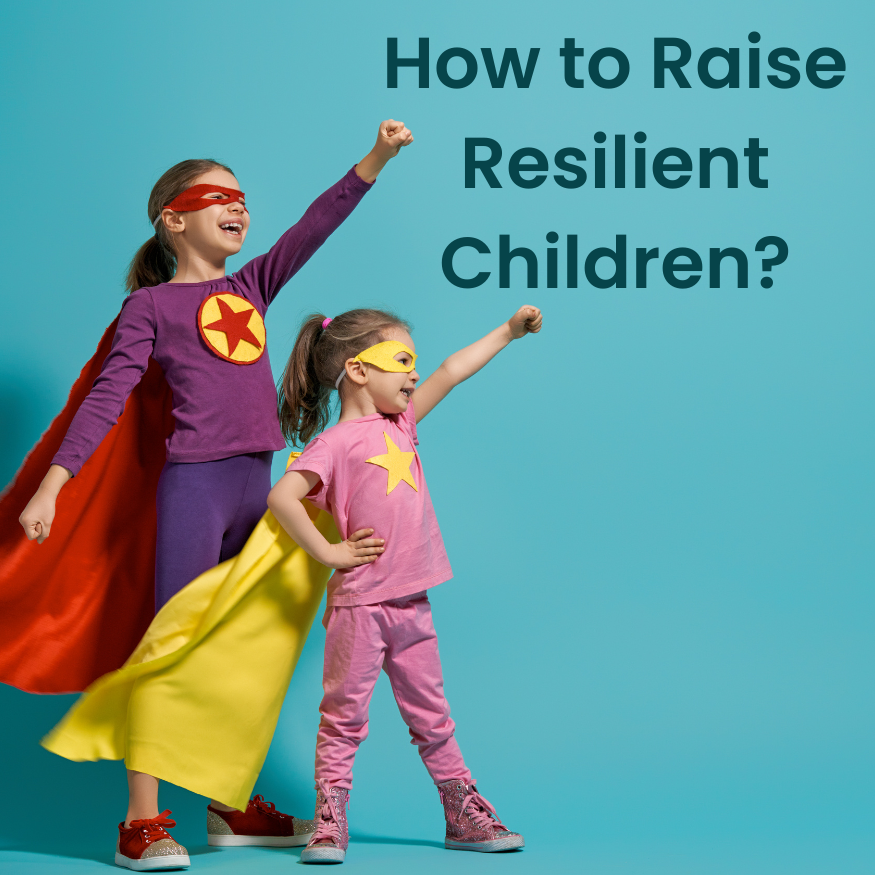How to Raise Resilient Children?
How TO Raise Resilient Children?
Helping Children Build Confidence and Coping Skills
If you’ve ever wanted to wrap your child in bubble wrap to protect them from life’s challenges, you’re definitely not alone. We all want our children to feel safe, happy, and confident. But the truth is, children grow the most when they face little challenges, try new things, and even make mistakes along the way.
Resilience isn’t about never struggling. It’s about learning to bounce back, cope with setbacks, and feel capable of handling life’s ups and downs. The good news is that resilience is a skill – and there’s so much we can do as parents to help our child build it.
What Does Resilience Look Like in Children?
A resilient child doesn’t mean a child who “never cries” or “always copes well.” It’s about having the inner strength to:
Try again when something is hard.
Ask for help when they need it.
Manage disappointment or frustration.
Believe, deep down, “I can handle this.”
Every time a child experiences a setback but feels supported to try again, their resilience grows a little stronger.
How Parents Can Build Resilience Every Day
It’s tempting to jump in and fix things for our child – but the more we solve their problems for them, the less they believe they can do it themselves. Instead, we can -
Encourage problem-solving. Ask, “What do you think we could try?” instead of giving the answer straight away.
Celebrate effort, not just success. Praise trying as much as achieving: “I’m so proud you kept going, even though it was tricky.”
Model coping skills. Show your child how you handle frustration: “This isn’t working the way I wanted, but I’m going to try again.”
Let kids experience small struggles. It’s okay for children to get things wrong – that’s how they learn.
Practical Ways to Help Kids Try, Fail, and Learn
Give small challenges. Let them help with tasks that are slightly “above their comfort zone.”
Encourage decision-making. Even simple choices like “Do you want to set the table or help with dessert?” teach independence.
Teach calming strategies. Show them how to take deep breaths, count to ten, or talk through their worries.
Focus on “next time.” Instead of saying “That didn’t work,” try “That was tricky, but what could we try differently next time?”
10 Phrases to Boost Confidence and Resilience
Here are some easy, encouraging things you can say to help your child feel capable and brave:
1️⃣ “It’s okay to make mistakes – that’s how we learn.”
2️⃣ “I’m proud of you for trying, even though it was tricky.”
3️⃣ “What’s one thing we could do differently next time?”
4️⃣ “You worked so hard on that – how does it feel?”
5️⃣ “I love how you didn’t give up.”
6️⃣ “Sometimes things are tough, but I know you can handle it.”
7️⃣ “What’s something you can do right now to help yourself?”
8️⃣ “I can see that was frustrating, but look how much you learned.”
9️⃣ “You don’t have to get it right straight away – keep practising!”
🔟 “I believe in you, even when things feel hard.”
The Role of Parents in Raising Resilient Kids
Raising resilient kids doesn’t mean leaving them to “just get on with it.” It means being a steady, supportive presence while encouraging them to try new things, solve problems, and recover from setbacks.
Children who know that their parents believe in them – even when they fail – grow up with a strong inner voice that says, “I can do this.”
Final Thoughts for Parents
Resilience is built in everyday moments – when your child struggles with homework, falls out with a friend, or feels nervous about a new activity. Each time you support them to keep trying, you’re giving them one of the greatest gifts a parent can give: confidence that they can handle life’s challenges.
Our Children’s Programme is full of fun, practical tools to help children build resilience and become emotionally confident. [Find out more here →]
